Roomba i2 vs. i3 Comparison Review
Roomba i2
Roomba i3
Roomba i2
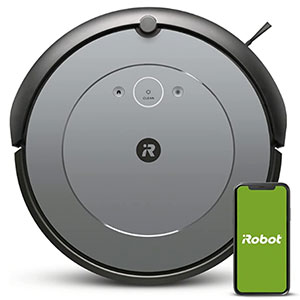
- Dimensions 13.4 x 13.5 x 3.6 inches
- Weight 7lbs
- Suction Power 850-900pa
- Dirt Detect Series II
- Recharge & Resume Yes
- Cleaning Bare floors, low pile carpets, pet hair

Roomba i3
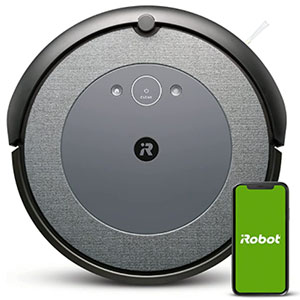
- Dimensions 13.34 x 13.26 x 3.63 inches
- Weight 7.44lbs
- Suction Power 850-900pa
- Dirt Detect Series II
- Recharge & Resume Yes
- Cleaning Bare floors, low pile carpets, pet hair
Which one to choose Roomba i2 or Roomba i3?
3 Reasons to Choose the Roomba I3
- Cleaning suggestions: I3 EVO suggests cleaning patterns with schedules based on your habits and peak allergen and pet hair seasons.
- Dirt detect technology: Integrated intelligent sensors send the I3 robot to the dirtiest places and start efficient cleaning.
- Imprint smart map: The robot can create and save precise maps of 10 rooms allowing it to use them to create virtual walls and targeted zones in the smartphone application.
Short Description
Roomba Cyber Monday 2025
Today’s debate – Roomba i2 vs. i3. Which is the best Roomba to buy? If you are out looking for a mid-range Roomba with some of the industry’s bells and whistles, and you are torn between the newly released Roomba i2 and the older Roomba i3, you came to the right place. We have compared all the important factors that should advise your purchase decision.
Roomba i2 and i3 and two popular variants in the Roomba I Series. The i2 is the latest model that debuted during Amazon Prime Day 2022. There is only one variant in the i2 lineup. On the other hand, there are two variants in the i3 lineup; Roomba i3 and Roomba i3 EVO. In this comparison review, we have pitted the new i2 against the Roomba i3 EVO, an upgrade of the Roomba i3.
The two robot vacuums share a lot in common, including a low profile design, 3-stage cleaning system, 1800mAh battery, iAdapt 1.0 navigation, smart connectivity, Imprint Link Technology, and automatic self-emptying. But as you may be aware, the EVO is an upgraded model designed for large apartments with heavy traffic. The main difference between the Roomba i2 and i3 EVO is the smart mapping system the i3 EVO boasts. But is this the only difference? For more, read long.
Roomba i2 vs. i3 Face-to-Face Comparison Review
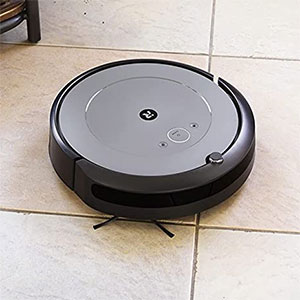
Just like the rest of the Roombas, except the S9 and S9+, the Roomba i2 is round-shaped. It comes in a low-profile design, allowing it to go under low-profile furniture such as coffee tables, sofas, beds, kickstands, etc. Its width allows it to pass between tight spaces such as dining chair legs. The dimensions are 13.4 x 13.5 x 3.6 inches, while the weight is 7lbs.
Regarding the appearance, it has a sleek design with 3 buttons at the top interface complemented by the iRobot logo. The finish is gray.
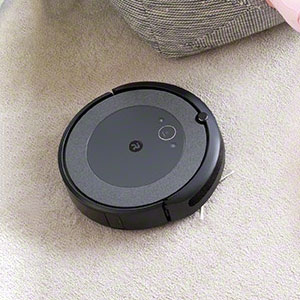
The Roomba i3 is similar to the i2. It is also a round-shaped robot vacuum with a low-profile design. It can go under low-profile furniture and pass between tight spaces unrestricted. The dimensions are 13.34 x 13.26 x 3.63 inches, while the weight is 7.44 lbs.
When it comes to aesthetics, the Roomba i3 is equally sleek. It has 3 control buttons at the top interface and the iRobot logo. The finish is black and gray with a woven-textured top interface.
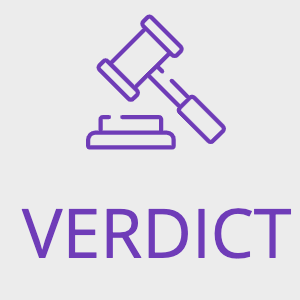

As far as the design and aesthetics go, the two robot vacuums are similar. They are round-shaped, have a low profile design, and bear almost the same dimensions and weight.

Roomba i2 is a versatile robot vacuum that uses a 3-stage cleaning system (AeroForce) to sweep and vacuum dirt and debris from all surfaces.
You can rely on it to vacuum all hard floors, including hardwood, tile, linoleum, ceramic, vinyl, and so on. Besides hard floors, it’s powerful enough to vacuum thin carpets with low pile.
However, when it gets to the thick carpets, the performance dips. This Roomba is also ideal for homes with furry friends. The i2 is among the best Roombas for pet hair. It picks up pet hair and kitty litter. What’s more? It has a filtration system that purifies the atmosphere.
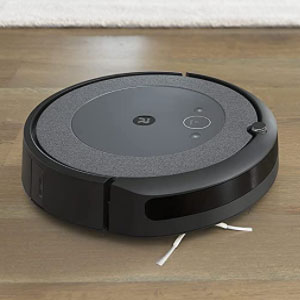
Roomba i3 is a highly specialized Roomba that also uses the same AeroForce 3-stage cleaning system that the i2 has. It has been designed to handle all bare floors, for example, tile, vinyl, hardwood, ceramic, marble, you name it.
It’s also suitable for thin carpets, but just like the i2, it will struggle on thick carpets as it doesn’t have enough suction to deep clean the high pile fabric.
The Roomba i3 EVO is also suitable for pet owners. It eliminates all kinds of pet messes, including pet hair, dander, kitty litter, and pet-related allergens.


There is no winner in this round as the new i2 comes with the same cleaning orientation Roomba i3 has.
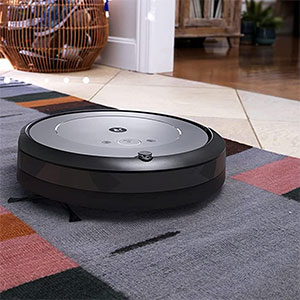
Roomba i2, a new model in the mid-range category, comes with average suction. It can’t match the likes of Roomba S9 which have advanced 3rd Gen motors. Instead, iRobot equipped it with a 2nd Gen motor that delivers an average of 850-900pa.
For the record, there are no suction level adjustments as it runs on a single-speed motor. Worth mentioning is that the i2 is much more powerful than the 600 series. It offers 10× the lifting power of models such as Roomba 692, 694, 675, and 690.
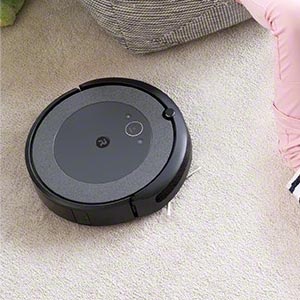
Roomba i3 is also an average model when it comes to suction. It packs the same 2nd Gen single-speed motor that the i2 has. On average, you can expect 850-900pa, which is enough to suck up the daily household dirt, from the light pet hair to much heavier cereals and raw popcorn.
To set the record straight, the average suction makes the Roomba i2 and i3 unreliable on thick carpets. But we acknowledge that the performance is better than the Roomba 600 series models.


This round ends in a draw as both models are equipped with the same motor that puts up the same suction. The duo also has no suction level adjustments, which could have come in handy in cleaning customization.
While the likes of Roborock, iLIFE, and Deebot have robot vacuums with integrated mopping function, iRobot has held on to its idea of separate robots for vacuuming and mopping. The Roomba i2 doesn’t have a mopping function; it only sweeps and vacuums.
That said, you will have to get a separate robot mop which means digging deeper into your pockets. But the good thing is that the company has a Braava M6 robot mop that can sync with the Roomba i2 such that the robot automatically starts mopping after the Roomba finishes vacuuming. The teamwork is courtesy of Imprint Link Technology.
Roomba i3 doesn’t have a mopping function, just like the i2. It is also a cleaner with sweeping and vacuuming functions only.
Here again, you will need to invest in a separate robot mop with the Braava M6 as the best choice if you want convenience.
The Roomba i3 also has Imprint Link Technology, so you can sync the two such that the Roomba signals the Braava to start mopping after it is done vacuuming.


This round has no winner as both models lack mopping function but can sync with the Braava M6. Once the Roomba finishes vacuuming, it signals the Braava to start mopping.
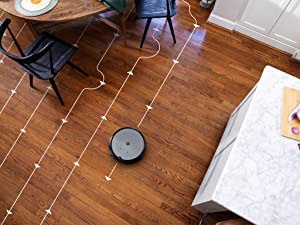
Roomba i2 is a step above the Roomba 600 series vacuums in terms of navigation. It still uses the exact iAdapt 1.0 SLAM Navigation System that comes with the entry-level Roombas, for example, Roomba 692, 694, and 690. There are sensors that detect obstacles and tell the Roomba to turn.
In case of a collision, the retractable bumper absorbs impact. There are also anti-drop sensors that prevent the Roomba from falling off the stairs. But while the i2 comes with an old navigation system, it performs exceptionally well courtesy of Reactive Sensor Technology, an innovation that enables the robot to identify obstacles and other clutter on the floor more precisely and accurately.
Last, this robot vacuum features Dirt Detect Series II, which uses sensors to spot areas with high dirt concentration.
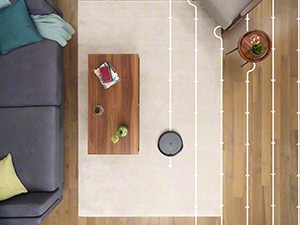
Roomba i3 EVO shares several navigation features with the i2. It has also been engineered with an iAdapt 1.0 navigation system based on SLAM algorithms. It deploys obstacle detection sensors that spot obstacles and signal the robot to find an alternative route.
The obstacle sensor is also in the mix to absorb impact. Roomba i3 EVO does come with Reactive Sensor Technology, so it has the accuracy of the Roomba i2 in obstacle detection.
Last, the i3 also comes with Dirt Detect Series II, which leverages optical and acoustic sensors to find areas with concentration of dirt. It then focuses more on such spots for spotless clean.


There is no winner in this round as both models come with iAdapt 1.0 Navigation, and more so, they have Reactive Sensor Technology.
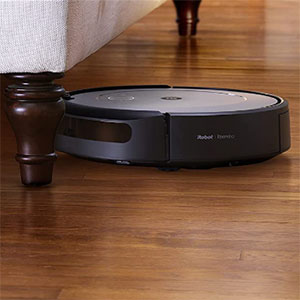
While it’s a new Roomba, the i2 disappoints when it comes to mapping. Unlike other top-of-the-range models that feature Imprint Smart Mapping Technology, the Roomba i2 doesn’t have smart mapping, so it can’t create or store maps. But at least it is a step ahead of the old models that clean randomly, leaving lots of untouched spots.
The i2 cleans in neat rows for efficiency. In rooms with average traffic, you can be sure the i2 will cover 95% of the surface that needs to be cleaned, while in traffic rooms, it covers an average of 90%.
Regarding boundary marking, the Roomba i2 doesn’t have Keep Out Zones (digital boundaries). Instead, it works with Virtual Walls (bought separately).
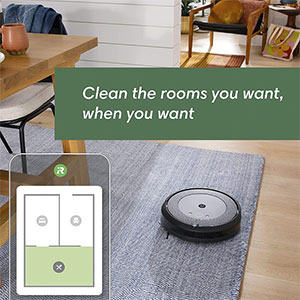
The Roomba i3 EVO, on the other hand, has smart mapping dubbed Imprint Smart Map. It gives the robot the ability to learn your home’s layout and create an Imprint Smart Map so you can send your robot to clean any room you want, at any time —either on a schedule or right away.
It can create and save up to 10 maps. Regarding the cleaning pattern, the i3 cleans in neat rows ensuring entire level coverage. In homes with less traffic, expect 96 coverage, while in high traffic rooms, expect 98% coverage.
Last, on boundary marking, this robot uses Virtual Walls. Keep Out Zones, and targeted cleaning features such as Clean Zones are unavailable.


The Roomba i3 EVO wins this round. While the i2 and i3 clean in neat rows, the Imprint Smart Map feature gives the Roomba i3 the edge.
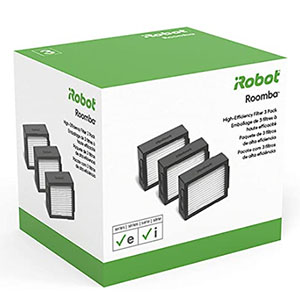
It seems iRobot is not shifting to true-HEPA filters anytime soon as its latest kid on the block, the i2 comes with AeroForce high-efficiency filters. While high-efficiency filters capture 99% of allergens and other particulates that cause bad odor, they filter down to just 0.6 microns, while true-HEPA filters filter down to 0.3 microns.
All the same, Roomba’s high-efficiency filters go a long way in keeping your home fresh as they vacuum.

Roomba i3 also uses the AeroForce high-efficiency filtration, which is just as efficient as the i2’s filtration system. The Roomba i3 captures 99% of allergens, dust, and dust mites, among other elements that may trigger allergies or cause a foul odor.
They, too, filter down to 0.6 microns, unlike Neato Botvacs, which filter down to 0.3 microns, courtesy of true-HEPA filters.


This is another round that the two models tie. They both tag along with AeroForce high-efficiency filters.
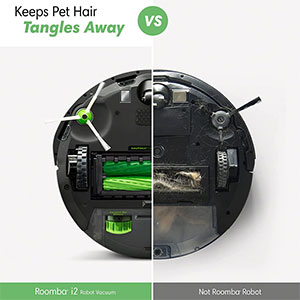
Like the other models in the Roomba I series, the i2 comes with an updated brush dubbed AeroForce Dual Multisurface Brushroll with Anti Tangle Technology. For the record, there are two brushes: the primary brush and the secondary brush. The primary brush does all the heavy lifting.
It is highly specialized for all surfaces. It’s gentle and effective in agitating and lifting dirt. As the name suggests, the primary brush system consists of two brushes, one for agitation and another for dirt lifting.
Also worth mentioning is the anti-tangle technology that reduces the chances of the brushroll getting jammed by long hairs. On the other hand, the secondary brush is a side-sweeping spinning brush that reaches the edges and deep corners.
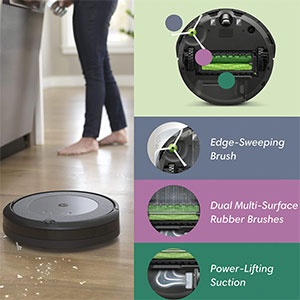
Roomba i3 also has the same brush as that of the i2. This is the AeroForce Dual Multisurface Brush with Anti-Tangle Technology. The system also consists of the main roller brush and a sweeping side brush. The main roller brush has one brush designed for agitating dirt and another that lifts dirt to the suction vent.
The i3 is also a good Roomba for pet hair, just like the i2, as it comes with anti-tangle technology, so the chances of long dog hairs tangling on the brushroll are cut by half.
The Roomba i3 also features a side brush that spins while sweeping the deep corners and wall edges that the main brush can’t access.


None of the two Roombas has the edge as they both come with the same brush system consisting of a dual brushroll system with anti-tangle technology and a spinning side brush.
Roomba i2 comes with a large 0.5L bin that has to be emptied frequently to prevent the buildup of bad odor. You also don’t want allergens to leak back into the atmosphere.
Luckily, the i2 has a full bin indicator, so you won’t miss an emptying schedule. Interestingly, the Roomba i2 can empty itself automatically.
It is compatible with the iRobot Clean Base unit but note that the unit is not provided, so you have to purchase it separately or buy the Roomba i2 and Clean Base bundle.
The Roomba i3 and i3 EVO come with a 0.5L bin and the full bin indicator.
This bin, too, requires frequent emptying, but if you hate emptying the bin manually, Roomba i3 is compatible with iRobot’s revolutionary automatic self-emptying mechanism.
But not, the i3 and i3 EVO don’t come with the Clean Base Unit, while the i3+ and i3+ EVO* comes with the Clean Base unit.


It’s hard to call a winner here as both models are self-emptying robot vacuums. The i2 and i3+ EVO don’t come with the Clean Base, but they are compatible with the technology. That said, it’s a draw.
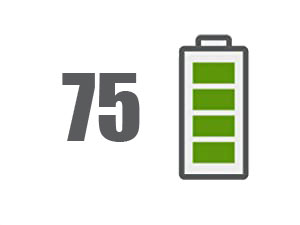
The Roomba i2 comes with a lithium-ion battery which is preferred because it holds more charge and doesn’t fade quickly. It has a 1800mAh capacity which holds enough charge to power the Roomba for 75 minutes.
While it’s an entry-level Roomba, we are glad it has intelligent power management. The Roomba i2 will recharge and resume cleaning from where it left. You don’t have to remind it that it hasn’t finished cleaning. The recharge time is around 2-3 hours.

The Roomba i3 EVO also comes with a 1800mAh lithium-ion battery. The runtime is approximately 75 minutes, while the recharge time is 2-3 hours.
Regarding power management, the i3 EVO will dock for recharge when the power goes down while it’s on duty. After recharging, it will automatically leave the docking station and continue from where it paused.


There is no winner in this round as both Roombas have the same lithium-ion battery with a 1800mAh capacity that offers 75 minutes of runtime.
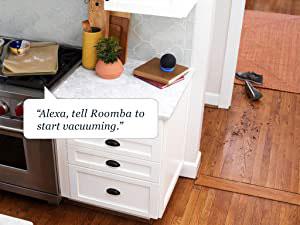
Roomba i2, as one of the latest Roombas, comes with plenty of automation and smart features courtesy of iRobot OS, the latest release from the American brand. iRobot OS takes cleaning a notch higher by offering personalized suggestions. The robot allows you to schedule it to clean every day of the week, specific days of the week, specific times, or specific rooms.
As you may be aware, this is a smart robot vacuum compatible with 2.4Ghz WiFi for smartphone app operation and voice assistant compatibility. On the smartphone app, you get full control of the Roomba even while you are away.
Besides the iRobot Home app, you can just give Alexa or Google Assistant commands, and it will take care of the rest.
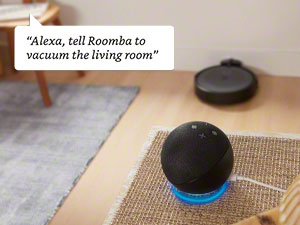
Roomba i3 EVO has also been updated, so it uses the new iRobot OS that takes cleaning to the next level, courtesy of its customizability and suggestions.
It is also a smart robot vacuum powered by 2.4GFHz WiFi for smartphone operation via the iRobot Home App. On the app, you also have all the controls and can operate the robot remotely as long as you have stable home WiFi.
Besides app operation, this robot syncs with Alexa and Google Assistant and understands commands better.


There is no winner in this round as the two models share the same automation and smart features. However, considering the i3 EVO has Imprint Smart Maps, there's more that you can do with the Roomba i3 on the app than with the i2.
The Roomba i2 comes with:
- 1 Roomba® i2 Robot Vacuum
- 1 Home Base® Charging Station
- 1 North American Line Cord
- Documentation
The Roomba i3 EVO comes with:
- iRobot® Roomba® i3 EVO Robot Vacuum
- 1 Home Base® Charging Station
- 1 Extra High-Efficiency Filter
- 1 North American Line Cord
- Documentation
Roomba i2 comes with a 1-year warranty, so you are covered if the robot develops any manufacturing defects. But remember, you have to abide by the warranty’s terms and conditions. Regarding aftersales, Roomba i2 has plenty of tutorials, troubleshooting guides, and other resources.
There are also plenty of affordable supplies such as filters and brushes at affordable prices. You can also get replacement parts easily.
Roomba i3 also comes with a 1-year warranty, and all the terms and conditions must be adhered to strictly lest the warranty is voided. As for aftersales, there is sufficient support from iRobot and other sources.
Last on supplies, filters, bags, and brushes are readily available, and so are replacement parts.


None of the models calls the shots as they have the same warranty, and the aftersales is excellent.
Maintenance
Roomba i2 comes with an anti-tangle brush that prevents hair tangling, but it is not invincible. From time to time, lift the robot and inspect the condition of the brush. Is it spinning freely? Is it worn out? Clear any tangles or stuck on dirt. Replace the brushroll after 6-8 months, depending on wear and tear. The side brush should also be inspected to clear tangles and a replacement installed after 6-8 months.
Roomba i3 requires maintenance too. The main brush should be inspected to make sure there are no hair tangles and are spinning freely. Also, check for wear and tear and replace the brushes. A side brush should last you for 6-8 months.
The Roomba i2’s filter is a critical component that requires frequent cleaning. At least twice a month, pop out the filter, remove the excess dirt and dust, rinse it, dry it, and put it back. A replacement should be made every 2-3 months.
Roomba i3’s filter should also be cleaned at least twice a month for optimal performance. The drill is the same.
As mentioned earlier, the Roomba i2’s bin requires emptying. For a fresh atmosphere, empty the bin at least daily. But if you have the iRobot Clean Base unit, you can forget about manual emptying for up to 30 days.
Roomba i3 is not different as its bin also requires manual emptying, preferably daily. The other option is to buy the Clean Base unit or go for the i3+ EVO, which can empty itself for 30 days or so.
Cleaning Tests
Bare Floor Vacuuming Test
As usual, we do thorough tests of the robot vacuums we review. Below are illustrations of the results we got when testing the Roomba i2 and i3 EVO on bare floors and carpets using everyday household dirt.
Bare Floor Vacuuming Test
- Sugar
- 98%
- 96%
- Icing Sugar
- 96%
- 94%
- Flour
- 97%
- 93%
- Rice
- 99%
- 98%
- Cereals
- 99%
- 97%
- Raw popcorns
- 99%
- 97%
- Kitty litter
- 97%
- 97%
- Pet hair
- 98%
- 98%
- Sand pebbles
- 97%
- 97%
Thick Carpet Vacuuming Test
Thick Carpet Vacuuming Test
- Sugar
- 96%
- 93%
- Icing Sugar
- 94%
- 88%
- Flour
- 93%
- 88%
- Rice
- 98%
- 94%
- Cereals
- 97%
- 95%
- Raw popcorns
- 97%
- 94%
- Kitty litter
- 94%
- 91%
- Pet hair
- 93%
- 90%
- Sand pebbles
- 95%
- 93%
Frequently Asked Questions
1. What’s the difference between Roomba i3 and i3+?
2. Can Roombas mop?
3. Does Roomba i2 have smart mapping?
4. Is the Roomba i2 worth it?
5. Is Roomba i2 good for carpets?
Wrapping Up
That’s it, folks, a Roomba i2 vs. i3 comparison review. As witnessed, these two models in the Roomba I Series lineup share a lot in common. They have a low profile design, use a 3-stage cleaning system, offer the same cleaning performance and autonomy, run on iRobot OS, are connected models, and are priced almost the same.
However, the Roomba i3 EVO is the best deal as it comes with Imprint Smart Maps a feature that makes it more accurate in floor mapping and opens up a whole world of opportunities as far as mapping is concerned.



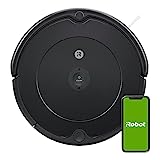
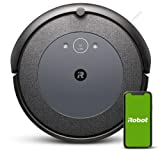
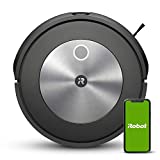
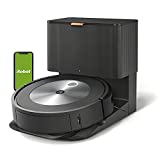
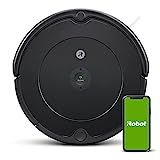
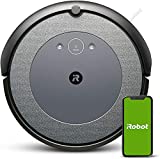
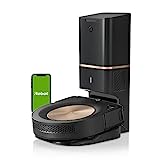
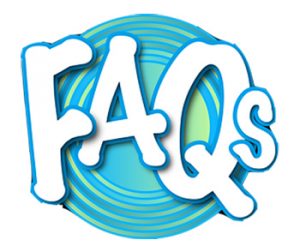
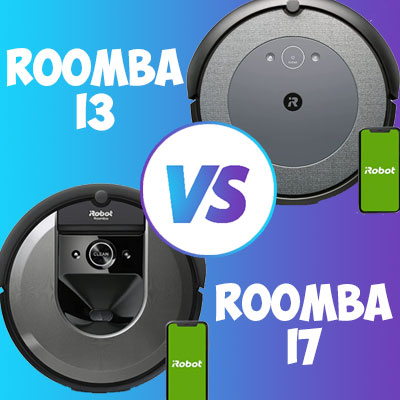
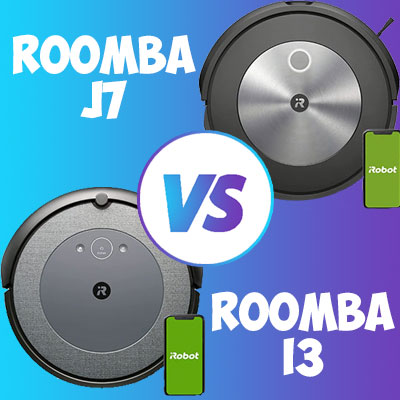
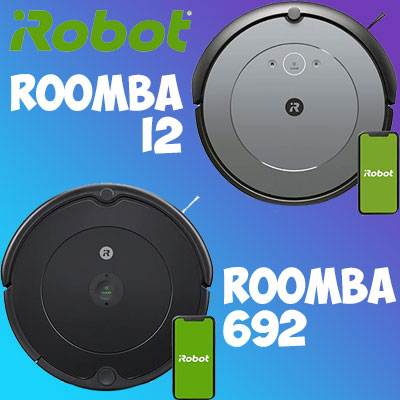
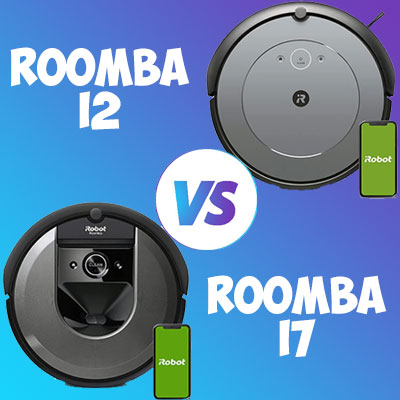

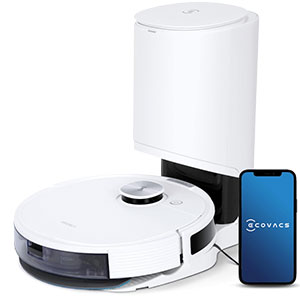
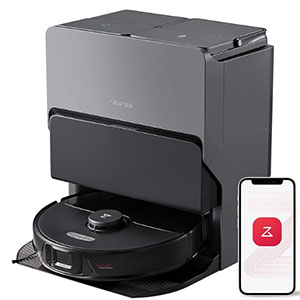
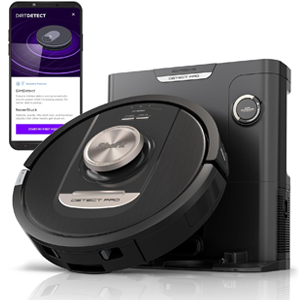
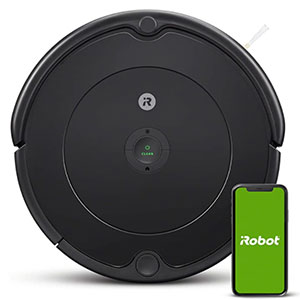
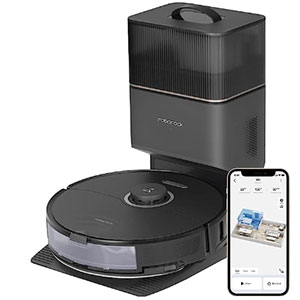
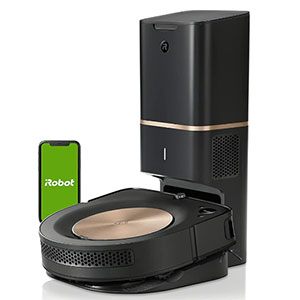
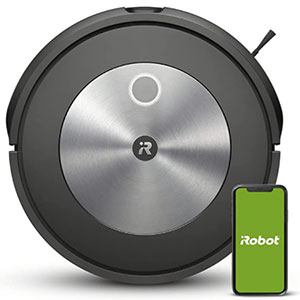
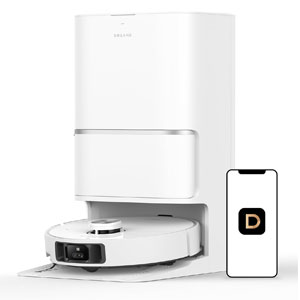

Sammy
Hi! Please help choose the best model) We have kids and millions of toys scattered around the house (inevitably hehe). Which Roomba robot can overpass small objects without disturbing cleaning?
Richard Harrison
Thank you very much for your question! In your case Roomba i3 will be a better choice since it’s equipped with an Imprint mapping system. Robot can avoid small objects and big furniture pieces, and detect the dirtiest spots. Besides, you can set your own prohibited zones where you don’t want or need cleaning.
Jonathan Bass
Robots are very similar I think. What is the price difference? You didn’t mention anything. Thanks!
Swartzcop Kennedy
Thank you very much for your question! At the moment Roomba i3 has a higher price compared to the i2. It’s caused by a mapping system. All other features are the same. We’d recommend waiting till Black Friday because this Black Friday you’ll be able to get various vacuums including Roomba models with nice discounts.
Lara
Love your comparisons, thank you! You said Roomba i2 is compatible with Alexa. Does it mean I can control it with voice commands?
Richard Harrison
Thank you very much for your question! The manufacturer added the opportunity of voice control to WiFi/Alexa/Google compatible robots. Through this link (https://homesupport.irobot.com/s/article/31145) you can find the list of commands for Alexa and check whether your model supports them.
Damon
I see there is no self-emptying base included in the kit. Can I buy a base separately and use these models?
Swartzcop Kennedy
Thank you very much for your question! Though the majority of Roomba vacuums of the I series come with Automatic Dirt Disposal base, Roomba i2 and Roomba i3 do not include it in the kit. But Roomba i3 supports this technology. If you’re interested in self-emptying robots, we’d also recommend you checking our Roomba i7 vs. j7 Comparison Review
Steve Strange
I have a 2 level home. If I move the charging base to the level that the Roomba is on, will both of these units work for me?
Swartzcop Kennedy
If you move the Roomba’s charging base to the level of your home where the Roomba is currently located, the Roomba will be able to recharge on that level. However, the Roomba will not be able to use the same charging base to recharge on the other level of your home. You will need to either move the charging base to the other level of your home when you want to use the Roomba on that level or purchase an additional charging base for the other level of your home.